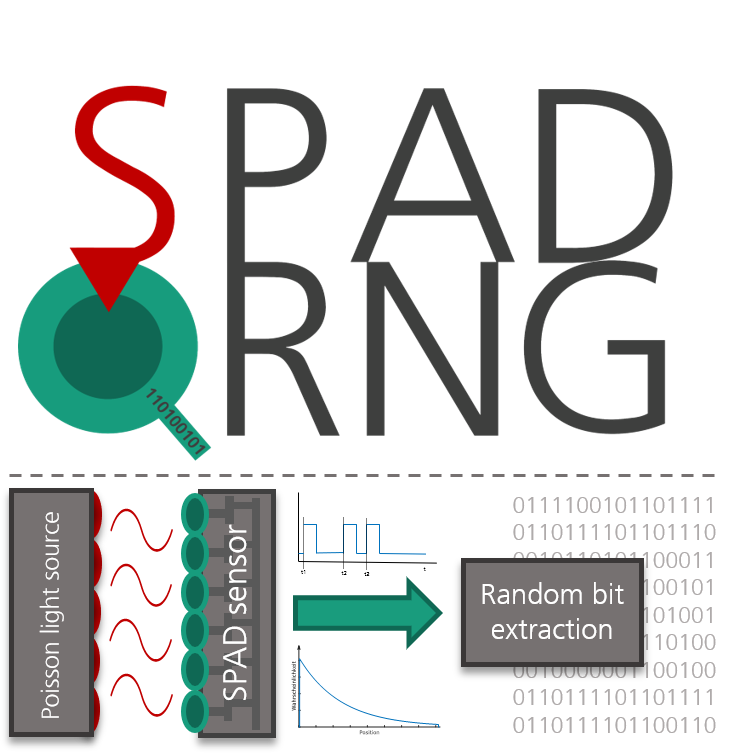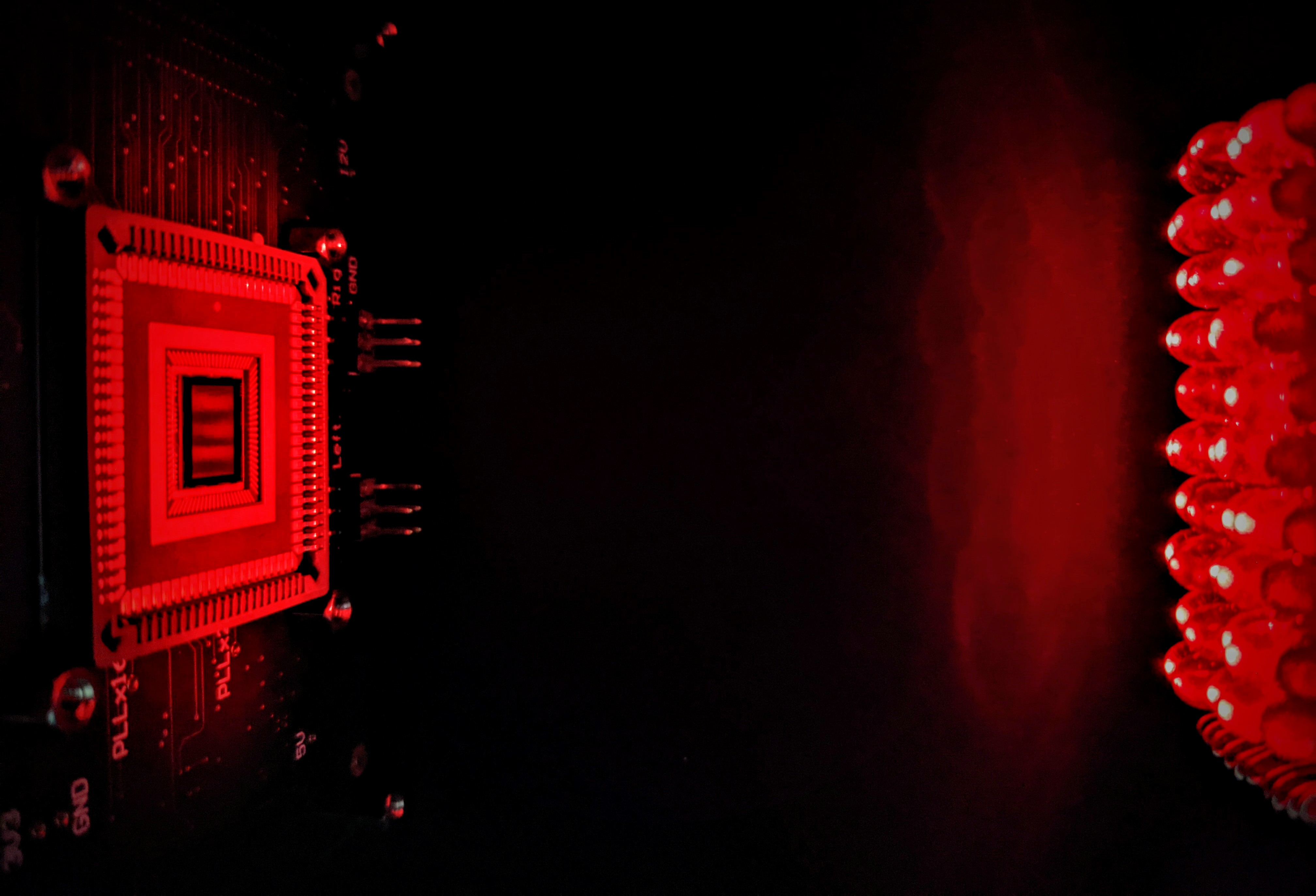Quantum Random Number Generators
SPAD QRNG
Quantum random number generators with SPAD-based sensors for secure encryption



Various applications require random numbers, for example to generate a unique digital key, to draw a lottery winner or to incorporate random parameters in a simulation. The field of cryptography and quantum communication in particular is becoming especially relevant in the course of rapid digitization and is driving the development of hardware components that enable reliable and tap-proof encryption.
In the past, algorithmically generated random numbers (also: pseudo-random numbers) often offered sufficient quality and security in the face of potential attackers' hardware performance. However, with sufficient performance or knowledge of the algorithm, these random number generators (RNGs) represent a vulnerability and possible point of attack. RNGs based on physical processes such as thermal noise or, in the more playful case, dice or lottery balls, often appear sufficiently random, but are equally deterministic given knowledge of all starting parameters and environmental conditions.
Quantum phenomena, for which it is inherently impossible to make a prediction, provide a source of true randomness. Much research therefore focuses on quantum random number generators (QRNGs). While some QRNG are based on radioactive decay or electronic effects, photonic systems form the most promising candidates here. Photons are subject to statistics describing intrinsic randomness and unpredictability that can be extracted by clever single photon detection.
The sensors of the Fraunhofer IMS are based on single photon avalanche diodes (SPAD) and can detect photons with high spatial and temporal resolution. By integrating them into CMOS technology, the SPADs can be directly connected to a readout circuit adapted to the application. These SPAD sensors provide an optimal basis for a QRNG that extracts photon statistics and outputs true, unpredictable random numbers. These random numbers can be generated with high reliability and pass all standard tests for randomness. The use of optical sensors to generate random numbers has already been proven even in commercial systems and promises high data rates in addition to a small form factor. With competences in analog and digital circuit design, a low-noise SPAD as sensor component and the in house 0.35 µm CMOS technology, the Fraunhofer IMS has an ideal basis for the research of this application.
Further current research work aims at technological developments and the realization of a reliable and attack-proof overall system in order to provide and process high amounts of true random numbers for security-relevant applications with SPAD-based QRNG.
The Fraunhofer IMS is interested in potential applications and interested partners for this technology. Please feel free to contact us!
Contact
Fraunhofer Institute for Microelectronic Circuits and Systems IMS
Michael Bollerott
Phone: +49 203 3783-227
Michael.Bollerott@ims.fraunhofer.de
Press
About the Fraunhofer IMS
The Fraunhofer Institute for Microelectronic Circuits and Systems IMS in Duisburg is a globally recognized research institution for the development of innovative technologies and processes in microelectronics, smart sensor technologies and embedded artificial intelligence. In the business units "Health”, “Industry”, “Mobility”, “Space and Security”, scientists and engineers create innovative and sustainable solutions for the industry, the service sector and the society - for more than 30 years.
The Fraunhofer-Gesellschaft, headquartered in Germany, is the world’s leading applied research organization. With its focus on developing key technologies that are vital for the future and enabling the commercial exploitation of this work by business and industry, Fraunhofer plays a central role in the innovation process. As a pioneer and catalyst for groundbreaking developments and scientific excellence, Fraunhofer helps shape society now and in the future. Founded in 1949, the Fraunhofer-Gesellschaft currently operates 75 institutes and research institutions throughout Germany. The majority of the organization’s 29,000 employees are qualified scientists and engineers, who work with an annual research budget of 2.8 billion euros. Of this sum, 2.4 billion euros are generated through contract research.